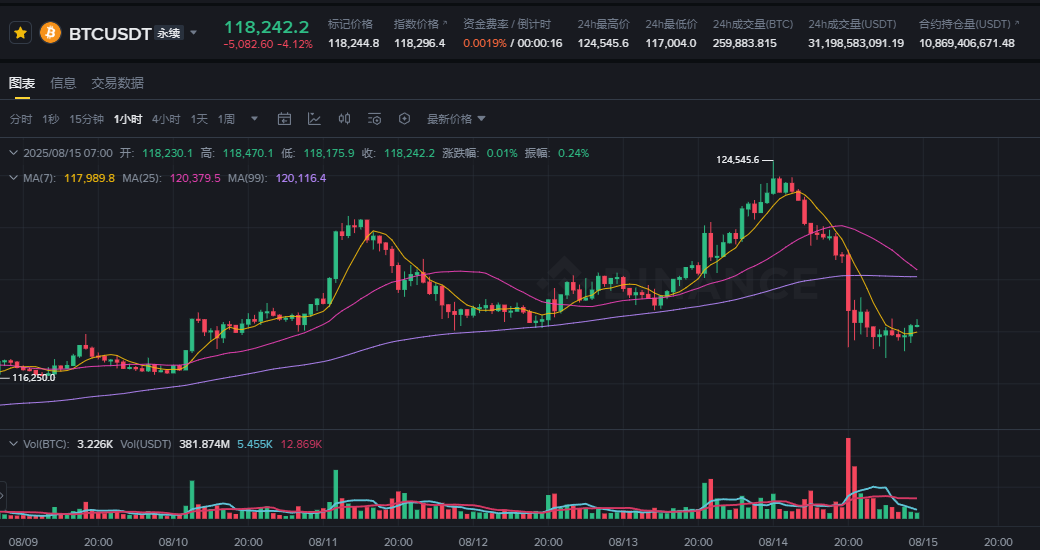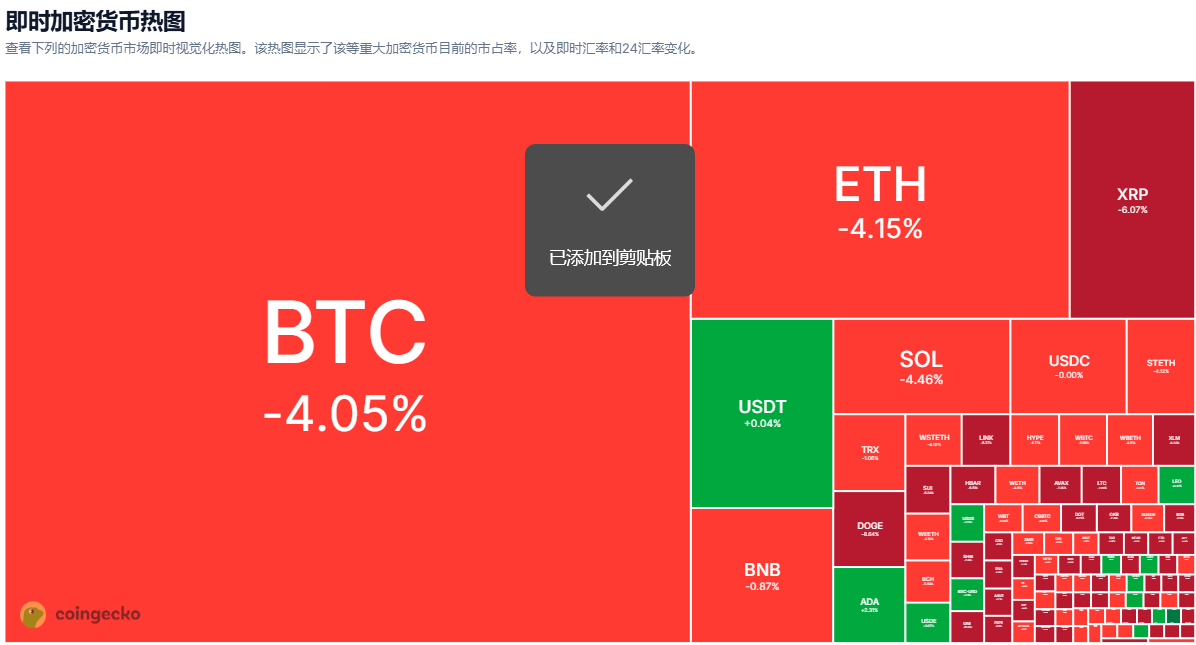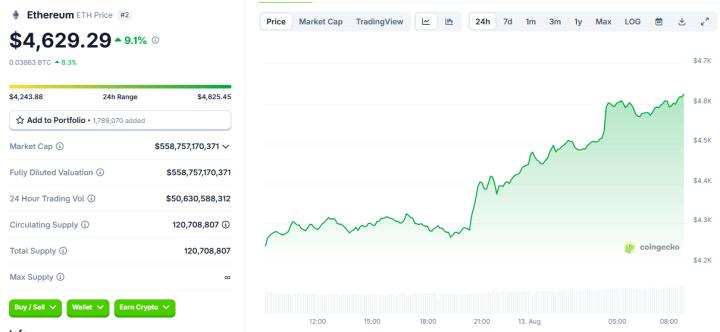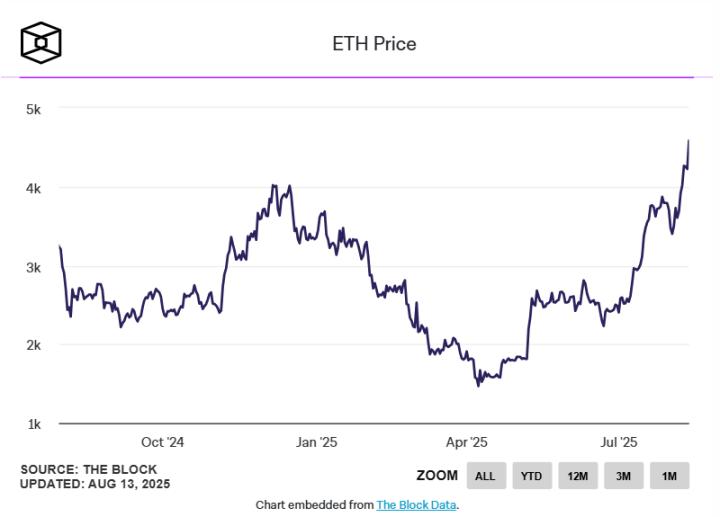
The Bitcoin market staged a shocking scene on August 15th. Just hours after hitting a historic high of $124,500, Bitcoin's price suddenly turned downward, rapidly breaking through the critical support level of $117,500, with an intraday drop of 4.24%, touching a low of $117,000. This sharp plunge of $7,000 was like a cold shower, extinguishing the market's just-ignited heated sentiment.

This flash crash was not an isolated incident. The total cryptocurrency market value evaporated by 3.9% within 24 hours, dropping to $4.09 trillion. Ethereum followed Bitcoin's synchronized decline, breaking below $4,500, currently trading at $4,568.
Even more devastating was the Altcoin market, with Ethereum ecosystem tokens like REZ, SSV, and ORDI generally plummeting over 15%, forming a comprehensive collapse.
The Ghost of Inflation Returns: A Fatal Macro Reversal

The unexpected shift in U.S. inflation data became the direct trigger for this plunge. The July Producer Price Index (PPI) released on August 14th surged 3.3% year-on-year, far exceeding market expectations of 2.5% and the previous 2.3%, marking the largest monthly increase since June 2022. This stood in stark contrast to the "moderate" CPI data released three days earlier - when July's overall CPI fell to 2.9%, and core CPI declined for the fourth consecutive month to 3.2%, which had previously filled the market with expectations of Fed rate cuts.
[The translation continues in the same manner for the rest of the text, maintaining the specified translations for specific terms and preserving the original formatting.]The true confidence indicator comes from the options market. Despite price volatility, the 30-day options Delta skew of Bitcoin is only 3%, far below the 6% put option threshold. This means institutional investors are not massively buying put options to hedge risks, and the core market sentiment remains neutral to slightly bullish. The divergence in sentiment between professional investors and retail investors reveals the different interpretations of the nature of this sharp decline - professional traders view it as a healthy adjustment, while retail investors are caught in panic selling.
Whale's Contrarian Operation
On-chain data exposes the movement of smart money. Whale addresses holding over 1,000 BTC accumulated 18,000 Bitcoins during the sharp decline, with costs concentrated in the $118,000-$120,000 range. These "smart money" contrarian layouts lay the groundwork for a potential market rebound.
In-depth Analysis of Structural Contradictions
This round of Bitcoin pullback reveals deep structural contradictions in its market. When the Federal Reserve meeting minutes signal potential rate cuts and the S&P 500 hits a historical high, Bitcoin weakens independently, highlighting its risk asset attributes still dominate. Despite being given the "digital gold" halo, in actual market fluctuations, Bitcoin more often acts as a technology stock substitute, highly correlated with traditional risk assets.
Lagging Effect of Liquidity Transmission
Global M2 money supply growth has a 0.94 high correlation with Bitcoin price, but liquidity transmission takes time. As the Federal Reserve reduces quantitative tightening and market liquidity expectations improve, Bitcoin's sensitivity to policy has decreased, instead directly responding to "real interest rate" changes. This shift in monetary transmission mechanism makes Bitcoin more susceptible to short-term sentiment shocks during policy gaps.
Hedging Demand in Emerging Markets
A noteworthy regional change appears in the Latin American market. Trump's tariff policies triggered capital flight from emerging markets like Brazil and Mexico, with Bitcoin trading volumes surging 40% in these regions. When local fiat currencies face devaluation pressure, Bitcoin's "capital flight tool" attribute becomes prominent, providing hidden support for prices.
This flash crash exposed Bitcoin's vulnerability as an emerging asset - when inflation data reverses, policy expectations fall short, and technical aspects deteriorate, forming a triple resonance, even robust derivative indicators cannot prevent the spread of panic. However, whales are quietly acting, absorbing chips at costs between $105,000 and $108,000, planting seeds for the next market move.
Market focus is now on the critical support level of $112,000, which is not only a dividing line between bulls and bears but will also test whether Bitcoin can maintain its "digital gold" narrative logic. As the Federal Reserve's September rate cut window approaches and regulatory frameworks like the US GENIUS Act are implemented, this crash triggered by the inflation specter may ultimately become Bitcoin's brutal coming-of-age ceremony towards becoming a mature financial asset.






